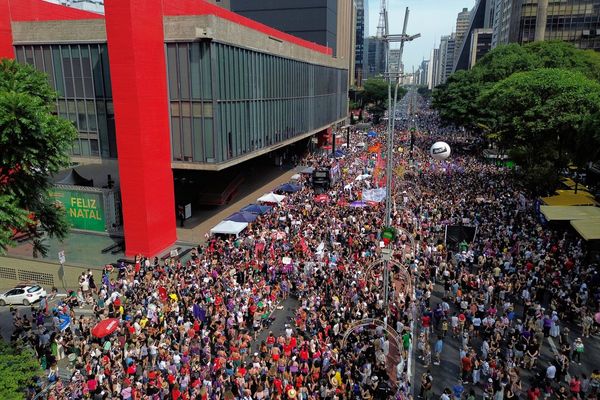
You walk into your local grocery store, see a glossy ad in the paper promising fresh produce, premium brands, and great service—but then you wander into the clearance bins section and see a different story. Clearance bins often tell consumers what a store really struggles with: overstock, spoilage, pricing errors, or branding issues. If you pay attention, the clearance bins can reveal more than the ads ever will—they show how well the store manages inventory, quality, and customer values. Knowing what clearance bins say gives you insight into whether a store is dealing with waste efficiently, cutting corners, or simply making smart deals. Let’s dig into what those clearance bins really mean, beyond the “half-price” signs.
Overstock & Poor Demand Forecasts
When you see items piled deeply in clearance bins, often it’s because the store overestimated demand. Clearance bins are frequently full of products that didn’t sell—flavored sodas, seasonal flavors, specialty snacks, novelty items. That suggests weak demand forecasting or misreading customer preferences. Stores that constantly have clearance bins brimming may struggle to know what their shoppers really want. That inefficiency can hurt prices, freshness, and ultimately cost the store—and you—through markdowns or waste.
Approaching Expiration & Perishable Waste
Clearance bins also tend to house items nearing their “best by” or “use by” dates. Perishables—dairy, baked goods, deli items—often wind up there when the shelf life is just a day or two away. This speaks to how fast the store moves inventory and whether they relax quality control to avoid loss. If perishables frequently land in clearance bins, it could signal poor ordering practices or over-stocking. For shoppers, that means they must check dates carefully, because marked-down doesn’t always mean “still good.”
Packaging or Brand Discrepancies
Many items in clearance bins are there because packaging changed, brands were discontinued, or packaging was bumped or damaged. Even if the contents are fine, cosmetic defects—slightly torn boxes, misprints, dented cans—often send a product to the clearance bins. This reveals how a store values presentation and branding. Sometimes the store may overpay for branded stock that later loses shelf appeal. What ends up in clearance bins in such cases shows what the store and shoppers care about: looks, not always quality.
Suppliers & Private-Label Strategy Issues
Sometimes what you see in clearance bins reveals how well a store sources products, or how its private-label lines perform. If the clearance bins are full of private-label or store-brand goods, it might mean those products aren’t resonating with customers. Conversely, too many national-brand items in clearance may suggest pricing was too high or the store miscalculated margins. Stores using private labels typically try to push those first, so seeing many of those in clearance could be a red flag. This tells you about a store’s supply chain and pricing strategy more than its ads do.
Shrinkage, Returns, & Loss Prevention Signals
Product shrinkage—damage, theft, misplacement—is often hidden, but clearance bins can expose it. If items are returned, damaged, or found in poor condition, stores sometimes dump them into clearance to recoup some value rather than tossing them entirely. A lot of clearance might be a signal that the store has problems with returns, handling, or supply quality. Ads rarely mention returns or damage, but what ends up in clearance bins does. Regular clearance overflow in certain categories may indicate deeper operational or supplier quality issues behind the scenes.
Store Branding & Value Positioning
What sorts of items a store sends to clearance bins can also reflect its brand promise. A store that advertises premium quality but has clearance bins loaded with gourmet or high-end products might be trying to maintain a polished image while hiding mismatches between what they order and what sells. On the flip side, a store that promotes bargains or low price positioning may have fewer (or expected) markdowns, because customers expect and accept lower margins. Clearance bins can tell you whether a store is holding true to what its advertising promises—or whether there’s a gap between image and reality. They can reveal whether a store is realistic about its brand or just selling an ideal.
Customer Base & Local Preferences
The makeup of clearance bins often reflects what local customers do not want. Item after item in bins may mean that what sells well in bigger markets doesn’t resonate in your neighborhood. For example, ethnic sauces, specialty health foods, or niche snacks that an ad glorified may remain untouched and end up marked down heavily. A store with a strong local understanding will have clearance bins that are lean and focused. If the bins are full of products that were advertised heavily but did not sell, that could mean management is disconnected from the actual tastes of its customers.
What You Can Do When You Notice This
Clearance bins aren’t just for bargain-hunters—they’re signals you can use to shop smarter and judge stores better. When clearance bins are excessively full, check item dates, packaging defects, and compare with regular-priced inventory to see what the store is doing. Use what you notice in clearance to inform whether a store’s ads are over-promising—does the store truly offer premium goods, or mostly overstock and little turnover? If you find a store’s clearance bins always have certain kinds of items marked down, tailor your shopping accordingly—buy the ones that are good deals, avoid what tends to spoil. Ultimately, clearance bins may say more than ads: they show what a store actually values, how efficient it is, and how honest or aligned its marketing is.
When you shop, what has your local grocery store’s clearance bin told you—surprises, disappointments, hidden gems? Share what you’ve discovered or what you watch for below.
What to Read Next
- Why Are Chain Stores Selling Expired Items on Clearance?
- 6 Items That Grocery Workers Always Avoid on Clearance
- 7 Retail Chains That Disguise Clearance as “Limited Time” Offers
- 8 Overpriced Items That Always End Up in the Clearance Bin
- Grocery Clearance Tags Are Lying to You—Here’s Proof
The post Why Grocery Clearance Bins Might Say More About a Store Than Its Ads appeared first on Grocery Coupon Guide.







